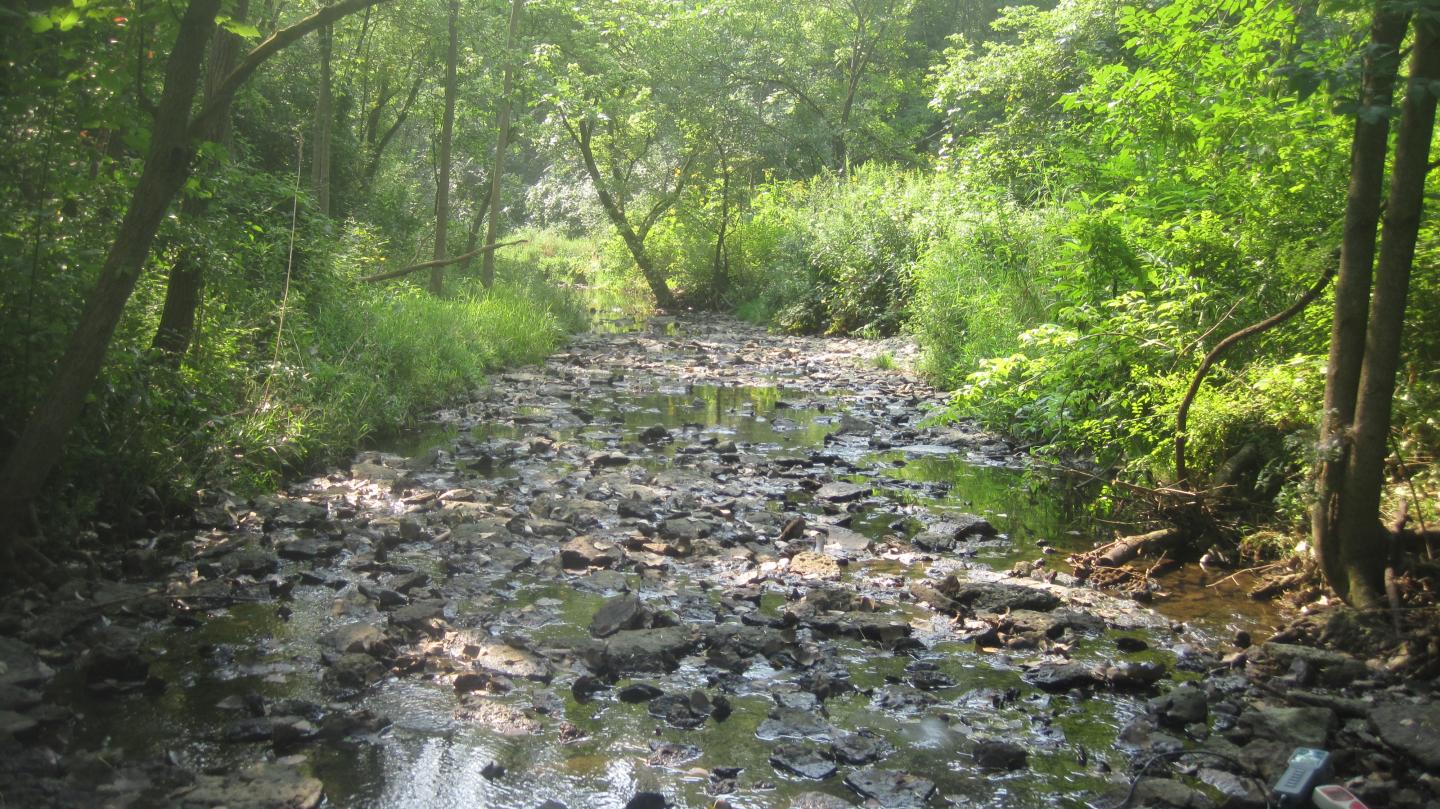
Credit: Rachel E. McNeish
Restoration projects to remove invasive plants can make a positive impact on native plant species. But a new study featured in the journal Invasive Plant Science and Management shows restoration has an additional benefit. Removal of invasive species growing alongside a stream or river can also improve the biodiversity of aquatic organisms.
Researchers conducted a study to explore whether removal of invasive Amur honeysuckle shrubs growing alongside a headwater stream in an Ohio forest would influence the diversity of insects, snails, worms and other aquatic macroinvertebrates living in the stream.
A 160-meter stretch of the honeysuckle was removed, which greatly improved the availability of light along the stream and changed the quality of organic matter. Scientists sampled the stream monthly for more than three years. They discovered that removing Amur honeysuckle had a substantial positive impact on the density, richness and diversity of the macroinvertebrates in the stream.
"It is clear that removing invasive plants can have a bottom-up impact on adjacent aquatic ecosystems, even when only a small section of the stream is restored," says Rachel McNeish, lead author and a post-doctoral fellow at Loyola University Chicago. "Land managers now have an important new impetus for invasive species management."
Full text of the article "Removal of the Invasive Shrub, Lonicera maackii (Amur Honeysuckle), from a Headwater Stream Riparian Zone Shifts Taxonomic and Functional Composition of the Aquatic Biota" is available in Volume 10, Issue 3 of the journal Invasive Plant Science and Management.
###
Media Contact
Natalie Warrender
[email protected]
01-223-347-944
http://www.cambridge.org/
Related Journal Article
http://dx.doi.org/10.1017/inp.2017.22





